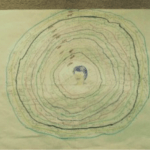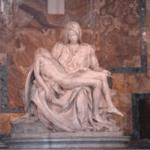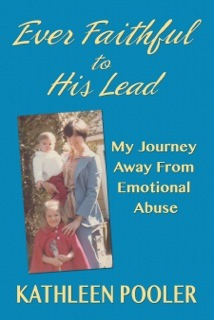Kathy Pooler is no stranger on these pages. From her informative blog post for The Memoir Network, 8 Lessons I Learned On My Memoir Writer’s Journey, to her generous sharing on the interview I did with her for Month One of the Memoir Authority, she has shown herself to be a thoughtful leader in the memoir field. Her new memoir Ever Faithful to His Lead: My Journey Away From Emotional Abuse, was published in July, and we are so pleased to have been included in her virtual book tour. On August 13, we published the first part of her post. Below is today’s posting, Memoir Writers are Master Sculptors, Part 2. Be sure you’ve read both. Today’s post is q veritable compendium of memoir-writing resources!–DL —
Memoir Writers Are Masters Sculptors, Part 2:
7 Techniques for Finding Your Story Structure
In Part 1, we discussed how memoir writers are like sculptors. Today, I will share a few techniques I learned and used to find the story structure for my memoir, Ever Faithful to His Lead: My Journey Away From Emotional Abuse.
Techniques I used to find my story structure:
- Identifying turning points (Linda Joy Myers)- listing key life events along a timeline. (See also Memory Lists.–DL)
- Mind mapping – a hand-sketched or software-generated diagram of ideas and events.
- ” Place I’ve Lived” exercise (Jerry Waxler)– compilation of “scene pops” from describing all the homes you have lived in.
- “The Tree of Me” Exercise (Sharon Lippincott)- a drawing of concentric circles rippling our from the core of you, resembling the rings of a tree. Each ring represents a significant date and events. (See also Core Memory Lists. –DL) From this visual,threads and pattern scan be identified. As you can see from mine, it can get convoluted and cluttered:

My “Tree of Me” drawing
- Patchwork Quilt- think of your story as a patchwork quilt with each square representing a scene in the story. You start out by collecting the squares until you are ready to sew them into a pattern.
- Author and Writing Coach Mary Carroll Moore uses the W Storyboard Structure which provides the framework for plotting out the story in the shape of a W, using three acts, starting with the triggering event going to the first turning point, building to a climax, second turning point then moving forward toward resolution/realization/transformation. She reviews it in more detail here.
Storyboarding is the method I chose to start sculpting my story. I began by writing vignette summaries on colored post-itnotesandplacethemonatrifold poster board for Acts One, Two and Three, incorporating key points from Mary Carroll’s W Storyboard Structure and Joseph Campbell’s Hero’s Journey framework.
Getting ready to map out my story on a storyboard using the” W Story Structure”” by Mary Carroll Moore
- David Price advises that ” you won’t see what the story is actually about until you’re at the end” in his book, The Pixar Touch and cites the following framework for storytelling:“Once upon a time there was…Every day… One day…Because of that…Because of that…Until finally…”
Joseph Campbell believes we are all on a mythic journey, “Hero’s Journey.” His framework recognizes a triggering event that propels the hero into action through” the dark night of the soul” where many obstacles must be overcome until resolution /transformation is achieved.
There is debate in writing circles about approaches to story structure called Planner or Pantser. Do you work from an outline (planner) or do you “fly by the seat of your pants” (pantser)?
For the purposes of defining story structure, I am a planner.
During my writing process, I experienced various levels of growth.
First, I reached a point of readiness to pull my stories together into a first draft. Although I had a general sense of my story, I wanted to leave myself open to new discoveries as I sifted, sorted, rearranged the pieces and envisioned where my story would take me. I’d heard that one shouldn’t even worry about the beginning or end until the rewrite, the next step after the first draft.
Dave Hood, Author of Find Your Creative Muse blog describes narrative structure in creative nonfiction as “the sequence of events and the way in which a writer tells the story,” citing a variety of frameworks that can be used.
Like a sculptor needs carving tools to shape a creation, I needed a plan to fit my story into, keeping the above goals in mind about story and theme.

Photo Credit: “Michelangelo’s Pieta” by Allie Caulfield uploaded from Flickr
” In every block of marble I see a statue as plain as though it stood before me, shaped and perfect in attitude and action. I have only to hew away the rough walls that imprison the lovely apparition to reveal it to other eyes as mine sees it.” —Michelangelo
Like the master sculptor, Michelangelo, we all need tools to “hew away the rough walls” that would imprison the “lovely apparition” of the story we need to tell.
As I hold my “masterpiece “ in my hands, I feel satisfied that I gave it the time and care it needed to develop into the story it became, a slice of my life with a universal message of hope, courage and resilience for those struggling to find their inner strength.
Use this link to order Kathleen Pooler’s book Ever Faithful to His Lead: My Journey Away From Emotional Abuse.
Synopsis:
A young woman who loses sight of the faith she has been brought up with attempts to find her way in the world, rejecting her stable roots in lieu of finding adventure and romance. Despite periods of spiritual renewal in which she receives a prophecy, she slides back, taking several self-defeating detours that take her through a series of heartbreaking events, including a second marriage that becomes abusive and a subsequent second divorce.
With every choice we make, there is a chance we take. When Kathy’s second husband, Dan’s verbal abuse escalates, Kathy finally realizes she must move on before she and her children become a statistic. Kathy is forced to take drastic action to save herself and her children, Leigh Ann, 14 and Brian, 12.
How does a young woman who came from a stable, loving family make so many wise choices when it came to career, but so many wrong choices when it came to love, so that she ended up sacrificing career and having to flee in broad daylight with her children from an abusive marriage? What is getting in her way and  why does she keep taking so many self-defeating detours?
why does she keep taking so many self-defeating detours?
The story opens up the day Kathy feels physically threatened for the first time in her three-year marriage to her second husband. This defining moment sends her on a journey of self-discovery to make sense of her life and discern what part she has played in the vulnerable circumstance she finds herself in.
She must make a decision—face her self-defeating patterns that have led to this situation and move on or repeat her mistakes. Her life and the lives of her two children are dependent upon the choices she makes and the chances she takes from this point forward.
Use this link to order Kathleen Pooler’s book Ever Faithful to His Lead: My Journey Away From Emotional Abuse.
How about you? What methods have you used to discover your story? What method(s) appeal to you? Do you have other methods that have worked for you?
Please leave your comments below~
This post is one of over 500 informative, well-written articles we have made available to you on this site.
We’ve contributed to your writing success; now we ask you to contribute to the expansion of the memoir conversation.
By reposting this article on your blog or website or reposting on your favorite social media, you will inform your fellow memoir writers of the programs and services—many for free like the blogs—that are available at TheMemoirNetwork.com.
Thanks for your generosity. You rock.



No comments yet.